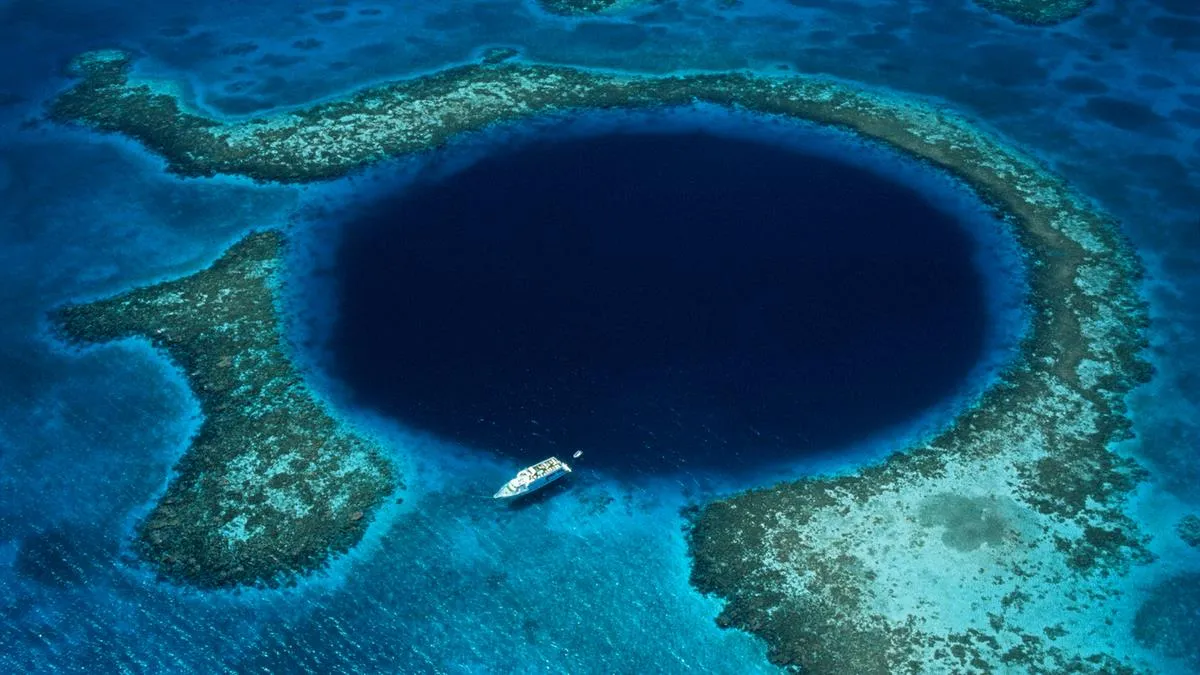
Tropical cyclones in the Caribbean are becoming increasingly frequent, with evidence indicating a significant rise in their occurrence over the coming decades. This alarming trend has been unveiled through a sediment core analysis from the Great Blue Hole, a massive underwater sinkhole located approximately 50 miles (80 kilometers) off the coast of Belize. The findings of this groundbreaking research were published on March 14 in the journal Geology.
Researchers extracted a sediment core from the depths of the Great Blue Hole, which is about 410 feet (125 meters) deep. This site has a rich geological history, having formed during the last ice age around 10,000 years ago due to rising sea levels. The sediment core, measuring 98 feet (30 meters) in length, provides the longest continuous record of tropical storms in the region, allowing scientists to track the frequency of these tropical cyclones over the past 5,700 years.
According to lead author Dominik Schmitt, a researcher at Goethe University Frankfurt's Biosedimentology Research Group, a significant finding of the study is the continuous increase in the regional storm frequency since 5,700 years B.P. (before present). The research revealed that the rate of storm landfalls in the area has been markedly higher in the last two decades compared to the preceding six millennia, highlighting the alarming impact of Modern Global Warming.
Tropical cyclones are intense, rotating low-pressure systems that form over warm ocean waters, transferring heat from the ocean into the upper atmosphere. These storms are known for their destructive potential, bringing strong winds, heavy rainfall, and devastating storm surges. The sediment layers analyzed from the Great Blue Hole allowed researchers to count back the years, similar to how one would analyze tree rings, to identify when storm-event sediment was deposited.
Over the past six millennia, researchers have found evidence of between four and sixteen tropical storms and hurricanes impacting the Great Blue Hole each century. However, in the last 20 years, a striking nine tropical storms have passed through the same region, indicating a troubling surge in storm activity. This increase appears to be driven by two main factors.
One significant driver of the rising frequency of tropical cyclones is the southward migration of the Intertropical Convergence Zone (ITCZ). This region is located near the equator, where the trade winds from the Northern and Southern hemispheres converge, resulting in low atmospheric pressure and high humidity. The ITCZ typically shifts northward in the summer and southward in the winter due to changing sea surface temperatures. However, it has been steadily moving southward over the past few thousand years, potentially leading to a displacement of the major Atlantic storm genesis region.
Additionally, the study suggests that the increase in global sea surface temperatures, driven by human-caused climate change, is likely responsible for the recent spike in tropical storms. This trend is expected to continue, resulting in even more frequent tropical cyclones in the coming decades. The researchers predict that by the end of the 21st century, as many as 45 tropical storms and hurricanes could impact the Caribbean, marking a significant concern for the region's future.
The findings from the Great Blue Hole highlight a compelling narrative about the increasing frequency of tropical cyclones in the Caribbean, driven by a combination of natural shifts and human activity. As the region braces for more extreme weather events, it becomes increasingly crucial to address climate change and its far-reaching impacts on our environment.